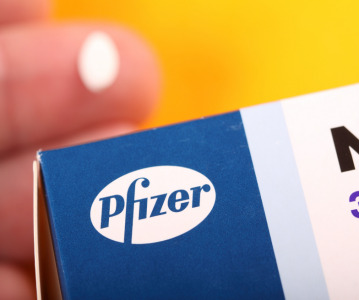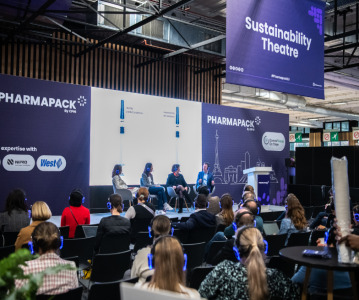Piramal encourages pharma to embrace green chemistry ahead of CPHI

Processes improvements for original patented products need to be considered, as do improvements beyond even DMF and ANDA submission.
Piramal Enterprises' Pharma Solutions division is calling on pharma companies to start complementing the principles of Quality by Design (QbD) to advance product and process quality. The CDMO believes it is imperative to improve the mechanism by which drugs are discovered, developed, and even manufactured through advances in Process Analytical Technology (PAT), and a commitment to continuous improvement by implementing green chemistry earlier in the drug development cycle.
Piramal Pharma Solutions believes that far too often life sciences companies examine the efficiency of the chemical processes used much too late in the drug development process, if at all. It is widely accepted that over 100 kg of waste can be produced during the manufacture of 1 kg of API or advanced intermediate.
In response, Piramal has launched a series of green chemistry initiatives and is fundamentally asking all its partners to evaluate the greenness of the chemical pathways (routes) they are using in any project.
There are two potential areas for implementing greener routes (processes) in drug development: a) when the drug demonstrates efficacy, during Phase II, as the clinical risk is reduced enough to consider putting R&D resources into developing a more efficient and greener route; and b) Life Cycle Management (LCM), post-commercialisation, where the onset of generic manufacture requires more efficient processes to remain competitive.
Vivek Sharma, CEO Pharma Solutions, Piramal Enterprises, comments: “Green chemistry by design (GCbD) presents us with a great opportunity to look at the bigger picture during route scouting and move ahead with green chemistry principles. I am sure that further down the line the FDA will look at bringing in these principles more formally, but as an industry we should be taking action and doing this now. The routes used for many drugs — whether generic or patented — are often atom inefficient and have significant room for improvement using route scouting methodologies including GCbD principles. We need to start the GCbD process early — not after a NDA or DMF has been filed, but as early as Phase I for innovators and as early as NDA approval for generic players. This is where the greener routes are established, after which they tend to remain with the product through its life cycle, and that is where the fundamental change needs to occur.”
The CDMO believes that, in the future, new chemistries for improved and greener routes are urgently needed if the industry is to see the bigger picture of GCbD followed by optimisation of these routes using QbD. Already, there are a number of tools available; from changing the initial routes, using biocatalysis, flow systems and chemo catalysis, and by implementing a key R&D function called “route scouting”. The problem is that the industry as a whole is still comfortable in trying the tested methods. A number of CMOs — Piramal included — are developing new chemistries that enable greener routes using GCbD principles but there needs to be a collective desire in pharma to improve its overall greenness and efficiency. Ultimately, drugs could be produced significantly cheaper and with green footprints.
As an example, Dr Dhileepkumar Krishnamurthy, VP & Head R&D (API), Pharma Solutions, Piramal Enterprises states that: “Piramal scientists re-designed the route for a patented product during the development of a new generic, resulting in over a 25 fold improvement in efficiency — waste was reduced from 1500 kg/kg to less than 50 kg/kg. Even in the generic industry, where reducing cost is a key, re-examining routes is not a regular occurrence prior to DMF filing. Therefore, we, as a collective industry, need to invest in investigating potential new routes for patented products that drive atom efficiency and a step change reduction in costs, instead of doing incremental improvements for a quick DMF and ANDA submission.”
Vivek Sharma, continued: “At CPHI Worldwide, Piramal is urging its partners and the wider industry to take up greener, and often cost effective routes to market, as we believe that as an industry we have a greater responsibility to reduce our carbon footprint while also assisting patients. In what is largely unique to pharma, once approval is granted, there is little incentive for continuous process improvement as regulatory hurdles present significant challenges to rework routes. As an industry, we need to change this paradigm by investing in GCbD principles, early and to drive cost effective and elegant chemical transformations.”
Piramal has instilled and nurtured a green culture over the last few years and is currently exploring a number of new, green, chemical processes and at CPHI the company will be looking for new partners to commercialise these waste-reduction technologies.

Related News
-
News Pfizer may shift production back to US under Trump pharma tariffs
At the 45th TD Cowen annual healthcare conference in Boston, USA, Pfizer CEO Albert Bourla outlined the potential for Pfizer to shift its overseas drug manufacturing back to the US as pharmaceutical industry players weigh their options against Presiden... -
News Women in Pharma: Connecting accessible pharma packaging to patients – a Pharmapack Special
Throughout our Women in Pharma series, we aim to highlight how CPHI events encourage discussions around diversity, equity, and inclusion initiatives in the pharmaceutical industry. -
News CPHI Podcast Series: Packaging expert perspectives at Pharmapack 2025
This month's podcast episode sounds a little different, covering the latest event in Paris – Pharmapack 2025. Digital Editor Lucy Chard speaks to several experts direct from the floor of the show, bringing you right in on the action.&nbs... -
News Closing 2024 with Editors' picks of top articles from the past year
Coming to the end of 2024 and it’s certainly been a busy year, for CPHI and for the rest of the pharmaceutical and healthcare industry. Topics of conversation throughout the last 12 months have been varied, touching on the technical, to the polit... -
News SCHOTT Pharma’s sustainable journey with CPHI
Sustainability is of paramount importance in the pharmaceutical industry. See how a recent partnership between CPHI and SCHOTT Pharma has helped to highlight and accelerate their sustainability journey to reach global goals. -
News CPHI Podcast Series: Investing in a vision for the future of life sciences
In this episode Lucy Chard is joined by Rajiv Khatau to discuss the importance of looking into new therapeutic areas and some of the more niche areas of pharmaceuticals, and investing in the future of the industry. -
News Lessons from CPHI Milan 2024: Sunny Intervals for Pharma Manufacturing?
As the 2024 CPHI conference wrapped up in Milan, we caught up with L.E.K. Consulting – a global strategy consulting firm with deep expertise in pharma manufacturing – to discuss evolving market perspectives and business outlook. -
News Women in Pharma: Reflections from Behind the Scenes
In this instalment of our monthly series, the team that brings you the Women in Pharma series each month sits down for a heart-to-heart on what the series means to them, and how they hope to continue their work in the future.
Position your company at the heart of the global Pharma industry with a CPHI Online membership
-
Your products and solutions visible to thousands of visitors within the largest Pharma marketplace
-
Generate high-quality, engaged leads for your business, all year round
-
Promote your business as the industry’s thought-leader by hosting your reports, brochures and videos within your profile
-
Your company’s profile boosted at all participating CPHI events
-
An easy-to-use platform with a detailed dashboard showing your leads and performance







